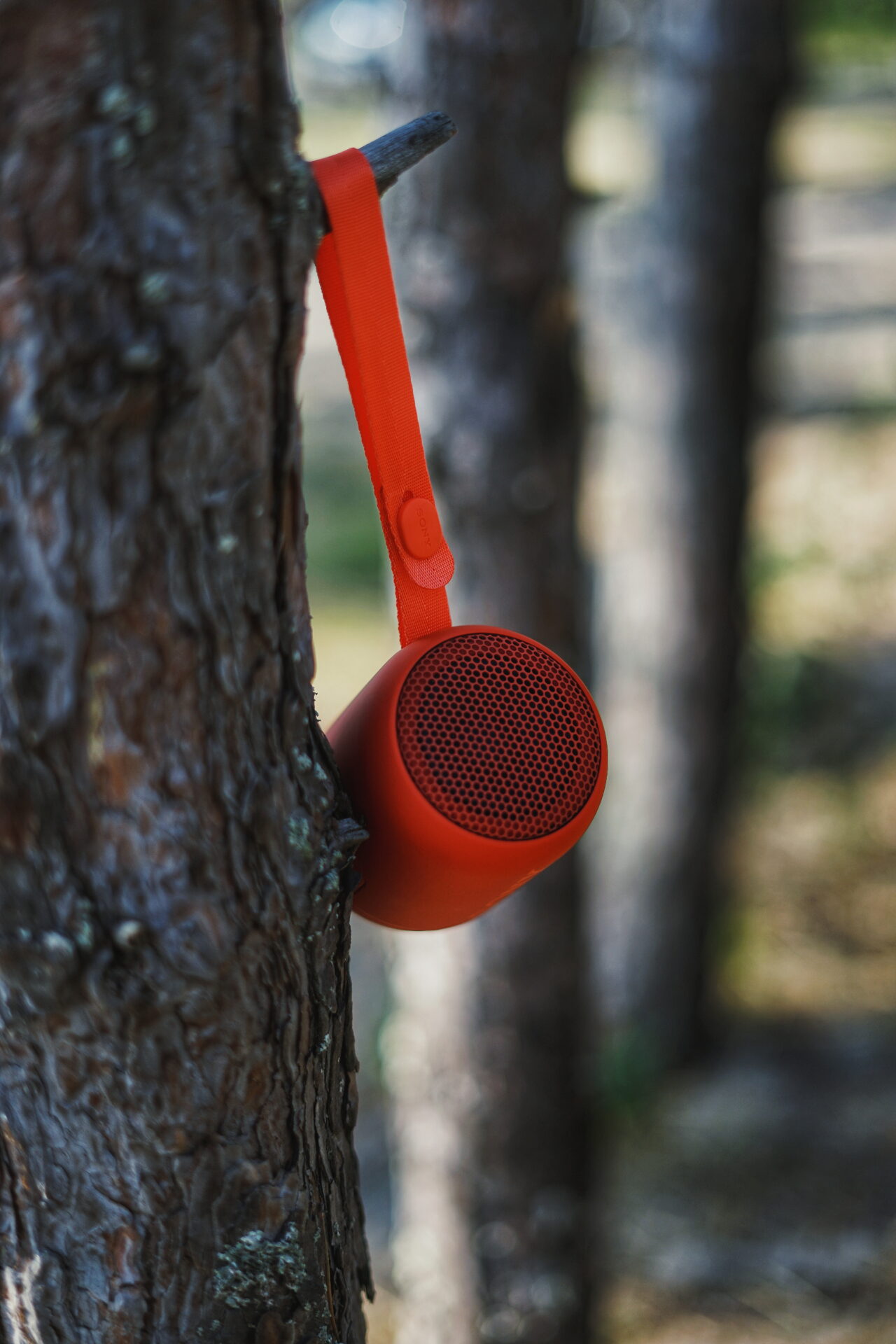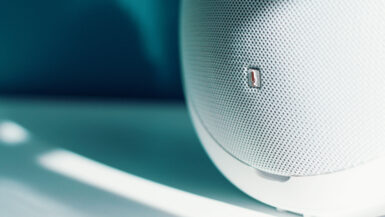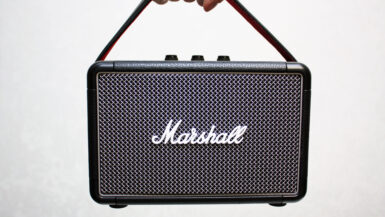In today’s rapidly evolving technological landscape, the concept of a smart home is no longer a futuristic dream, but a reality within our grasp. Voice-enabled smart home devices have transformed the way we interact with our living spaces, offering unprecedented convenience and efficiency. For individuals with physical disabilities, these advancements hold even greater significance, as they present an opportunity to regain independence and control over their environment. In this comprehensive article, we will explore the process of creating a voice-controlled smart home specifically tailored for the physically disabled, delving into the selection of compatible devices, their integration, and the potential benefits they offer in enhancing the quality of life for these individuals.
Top Voice-Enabled Smart Home Devices for Accessibility
Voice-enabled smart home devices have revolutionized the way we interact with our homes, providing increased accessibility for those with physical disabilities. With a wide range of devices available, it can be challenging to determine which ones will best suit your unique needs. In this subsection, we’ll explore some of the top voice-enabled smart home devices for accessibility, focusing on their features and how they can enhance the quality of life for the physically disabled.
Amazon Echo: The Power of Alexa at Your Command
The Amazon Echo is a versatile smart speaker that brings the intelligence of the Alexa voice assistant into your home. Alexa can execute a variety of tasks, such as controlling smart home devices, answering questions, and providing news updates. For those with physical disabilities, Alexa can simplify daily tasks, offering hands-free control over various aspects of the home environment.
Google Nest Hub: A Visual and Auditory Assistant
The Google Nest Hub combines the functionality of a smart speaker with a touchscreen display, allowing for voice commands and visual feedback. This feature-rich device can be used to control smart home devices, display photos, and provide step-by-step instructions for various tasks. For individuals with physical disabilities, the Google Nest Hub offers an accessible way to manage their home and stay connected with loved ones.
Apple HomePod: Siri in a Powerful Smart Speaker
The Apple HomePod brings the convenience of Siri into a high-quality smart speaker. With excellent sound quality and the ability to control various smart home devices, the HomePod is a strong contender for individuals with physical disabilities who are already invested in the Apple ecosystem. Siri can also be used to send messages, set reminders, and provide up-to-date information on weather and news.
Smart Locks: Enhancing Home Security through Voice Control
Smart locks, such as the August Smart Lock Pro and Schlage Encode, offer voice control through integration with popular voice assistants like Alexa or Google Assistant. These locks provide increased security and convenience, allowing users to lock and unlock their doors using only their voice. For those with physical disabilities, smart locks eliminate the need for physical keys or manual manipulation of the lock.
Smart Thermostats: Voice-Controlled Comfort and Energy Savings
Smart thermostats, such as the Nest Learning Thermostat and ecobee4, can be controlled via voice commands, providing a convenient way to manage home temperature and energy usage. With compatibility with popular voice assistants, smart thermostats offer an accessible solution for individuals with physical disabilities who may struggle with traditional thermostat controls.
By considering each of these top voice-enabled smart home devices for accessibility, you can create a customized smart home environment that caters to the unique needs of individuals with physical disabilities. Through the integration of these devices, you can enhance independence, promote a sense of security, and foster a more comfortable and enjoyable living experience.
Customizing Voice Commands for Personalized Home Control
A key aspect of creating a voice-controlled smart home for the physically disabled is the ability to customize voice commands to suit individual preferences and needs. By tailoring voice commands to be more intuitive and user-friendly, individuals with physical disabilities can effortlessly interact with their smart home devices, leading to a more seamless and enjoyable experience. In this subsection, we will delve into the process of customizing voice commands to ensure that your smart home environment is truly personalized and accessible.
Understanding Voice Assistant Capabilities
Before customizing voice commands, it is essential to familiarize yourself with the capabilities of your chosen voice assistant, such as Amazon Alexa, Google Assistant, or Apple Siri. Each voice assistant offers unique features and varying levels of customization, so understanding their strengths and limitations is crucial for optimizing your smart home experience.
Creating Custom Routines and Shortcuts
One of the most effective ways to personalize your voice-controlled smart home is by creating custom routines or shortcuts. These routines allow you to combine multiple actions into a single voice command, simplifying the process of controlling your smart home devices. For example, a custom routine might include adjusting the thermostat, turning on specific lights, and playing a favorite radio station when you say, “Good morning.” By developing routines tailored to your unique needs and preferences, you can streamline your daily interactions with your smart home devices.
Utilizing Voice Training Features
Some voice assistants, such as Amazon Alexa, offer voice training features that enable the assistant to better understand and respond to your specific voice. This can be particularly helpful for individuals with speech impairments or unique accents, ensuring that the voice assistant can accurately interpret their commands. By taking the time to complete voice training sessions, you can improve the overall responsiveness and accuracy of your voice-controlled smart home system.
Integrating Third-Party Voice Command Services
In some cases, third-party services can be used to further customize and enhance your voice-controlled smart home experience. Platforms like IFTTT (If This Then That) allow you to create custom applets that link different smart home devices and services together, enabling you to create unique voice commands that may not be available through the native voice assistant. By exploring these third-party options, you can unlock even greater levels of personalization and accessibility within your smart home environment.
By taking the time to customize voice commands, create tailored routines, and explore additional integration options, you can ensure that your voice-controlled smart home is truly designed with the specific needs of individuals with physical disabilities in mind. This personalized approach not only enhances the overall smart home experience but also empowers these individuals with a greater sense of independence and control over their environment.
Integrating Smart Home Devices for Seamless Accessibility
Creating a voice-controlled smart home for the physically disabled goes beyond simply selecting the right devices; it also involves integrating these devices in a way that ensures seamless accessibility and ease of use. In this subsection, we will discuss various strategies for integrating smart home devices, focusing on the importance of compatibility, connectivity, and user experience to create a truly accessible environment for individuals with physical disabilities.
Ensuring Device Compatibility for Smooth Interaction
One of the first steps in integrating smart home devices is to ensure that they are compatible with your chosen voice assistant, such as Amazon Alexa, Google Assistant, or Apple Siri. Compatibility is crucial to achieving smooth interaction between your devices and your voice assistant. When selecting devices, pay close attention to their compatibility specifications and look for those that are designed to work seamlessly with your chosen voice assistant platform.
Optimizing Connectivity for Reliable Performance
Reliable connectivity is essential for maintaining a responsive and accessible voice-controlled smart home environment. To ensure the best performance, consider investing in a strong and stable Wi-Fi network that can support the various smart home devices within your living space. Additionally, make sure that your devices are placed strategically throughout your home to provide optimal coverage and minimize connection issues.
Creating User-Friendly Interfaces for Enhanced Accessibility
While voice control is a crucial aspect of a smart home for the physically disabled, it is also important to consider other user-friendly interfaces that can further enhance accessibility. For example, some smart home devices, such as the Google Nest Hub, feature touchscreen displays that can provide visual feedback and an additional means of interaction. By incorporating devices with multiple user-friendly interfaces, you can create a more inclusive and versatile smart home environment that caters to a variety of needs and preferences.
Grouping Devices for Simplified Control
Grouping devices by room or function can streamline the process of controlling your smart home environment. For example, you can group all the smart lights in your living room under a single command, allowing you to control them collectively with a simple voice command like, “Turn off the living room lights.” By organizing your devices into logical groups, you can simplify daily interactions and make it easier for individuals with physical disabilities to manage their smart home environment.
Monitoring and Maintaining Your Smart Home System
Regular monitoring and maintenance of your smart home system are essential for ensuring seamless accessibility and optimal performance. Stay up-to-date with software updates and firmware upgrades for your devices, as these can often improve functionality and compatibility. Additionally, be proactive in troubleshooting any connectivity or performance issues that may arise, as addressing these concerns promptly can help maintain a reliable and accessible smart home experience.
By focusing on device compatibility, connectivity, user experience, organization, and maintenance, you can integrate smart home devices in a way that ensures seamless accessibility for individuals with physical disabilities. This thoughtful approach to integration not only simplifies daily tasks and interactions but also fosters a more empowering and enjoyable living environment.
Enhancing Safety and Independence with Voice-Controlled Security Systems
Creating a voice-controlled smart home for the physically disabled not only focuses on convenience and accessibility but also plays a critical role in enhancing safety and independence. In this subsection, we will explore the benefits of integrating voice-controlled security systems into a smart home environment, focusing on the features, benefits, and considerations that can help individuals with physical disabilities feel more secure and confident in their living spaces.
Smart Doorbells: A Virtual Set of Eyes and Ears
Smart doorbells, such as the Ring Video Doorbell and Google Nest Hello, provide an accessible way to monitor the front door and interact with visitors. These devices feature built-in cameras, microphones, and speakers, allowing users to see, hear, and communicate with visitors through their voice assistant or a connected mobile device. For individuals with physical disabilities, smart doorbells offer an added layer of security and convenience, as they can quickly and easily respond to visitors without physically answering the door.
Voice-Controlled Security Cameras: Remote Monitoring Made Easy
Security cameras, such as the Arlo Pro and Google Nest Cam, can be controlled via voice commands, providing an accessible way to monitor the home and its surroundings. Users can ask their voice assistant to show live feeds or recorded footage from their cameras, making it easy to keep an eye on their property without any physical effort. This feature is particularly beneficial for individuals with physical disabilities, as it enables them to maintain a sense of control over their environment and respond to potential security threats.
Smart Smoke and Carbon Monoxide Detectors: Proactive Protection
Smart smoke and carbon monoxide detectors, like the Nest Protect and First Alert Onelink, can be integrated into a voice-controlled smart home system, offering proactive protection in case of emergencies. These devices can send alerts to the user’s voice assistant or mobile device in the event of an emergency, and some models can even be silenced using voice commands. For individuals with physical disabilities, this added layer of safety can offer peace of mind and help them respond more effectively to emergencies.
Integrating Voice-Controlled Alarm Systems: Simplified Security Management
Voice-controlled alarm systems, such as the SimpliSafe Home Security System and Abode Smart Security Kit, enable users to arm and disarm their security systems using only their voice. This hands-free approach to security management is especially beneficial for individuals with physical disabilities, as it eliminates the need for manual interaction with a control panel or keypad. By integrating a voice-controlled alarm system into their smart home environment, these individuals can enjoy a heightened sense of safety and independence.
Considering Privacy and Data Security
While voice-controlled security systems offer numerous benefits for individuals with physical disabilities, it is crucial to consider the privacy and data security implications of these devices. Ensure that your chosen devices and services employ robust encryption and security measures to protect your personal information and footage from unauthorized access. Additionally, familiarize yourself with the privacy policies of the companies that produce these devices, as well as the voice assistant platforms, to better understand how your data is being used and protected.
By integrating voice-controlled security systems into a smart home designed for the physically disabled, individuals can gain greater control over their safety and independence. This approach not only helps to create a more secure living environment but also empowers these individuals to actively participate in managing their security and well-being. Through careful selection and integration of these devices, a voice-controlled smart home can serve as a powerful tool in enhancing the quality of life for individuals with physical disabilities.
Leveraging Smart Home Automation for Improved Mobility and Comfort
Creating a voice-controlled smart home for the physically disabled involves more than just selecting and integrating accessible devices. It also entails leveraging smart home automation to enhance mobility and comfort, allowing individuals to move through and interact with their living spaces more efficiently and effortlessly. In this subsection, we will explore various ways to harness the power of smart home automation, focusing on strategies that can improve mobility and comfort for individuals with physical disabilities.
Automating Lighting for Enhanced Visibility and Convenience
One of the most impactful ways to improve mobility and comfort is by automating lighting throughout the home. Voice-controlled smart lights, such as Philips Hue and LIFX bulbs, can be easily controlled through voice commands, eliminating the need for manual switches and offering greater convenience for individuals with physical disabilities. Additionally, by creating custom lighting schedules and routines, users can ensure that their living spaces are consistently well-lit, reducing potential tripping hazards and fostering a more accessible environment.
Smart Blinds and Window Coverings: Voice-Controlled Privacy and Temperature Regulation
Smart blinds and window coverings, like Lutron Serena Shades and IKEA’s Fyrtur blinds, can be controlled through voice commands, providing an accessible way to manage privacy and temperature within the home. By automating these window treatments, individuals with physical disabilities can easily adjust their environment to suit their needs and preferences, without the need for manual intervention. Furthermore, these devices can be programmed to adjust automatically based on factors like time of day or room temperature, ensuring optimal comfort and energy efficiency.
Utilizing Motion Sensors for Hands-Free Navigation
Integrating motion sensors into a smart home environment can significantly improve mobility for individuals with physical disabilities. Devices like the Philips Hue Motion Sensor and the SmartThings Motion Sensor can be used to trigger specific actions, such as turning on lights or adjusting thermostats, based on the user’s movements. By automating these actions, individuals with physical disabilities can navigate their living spaces with greater ease and confidence, reducing the need for manual interaction with various devices.
Automating Climate Control for Consistent Comfort
Maintaining a comfortable temperature within the home is crucial for individuals with physical disabilities, who may be more sensitive to fluctuations in temperature or humidity. Smart thermostats, like the Nest Learning Thermostat and ecobee4, can be programmed to maintain a consistent temperature throughout the day, ensuring optimal comfort for the user. By automating climate control, individuals with physical disabilities can focus on their daily tasks and activities without the distraction of temperature-related discomfort.
Creating Personalized Routines for Effortless Living
The true power of smart home automation for the physically disabled lies in the ability to create personalized routines that cater to individual needs and preferences. By combining various devices and automating specific actions based on factors like time of day, user location, or sensor data, individuals with physical disabilities can experience a more effortless and enjoyable living environment. For example, a morning routine might involve raising the blinds, adjusting the thermostat, and turning on the coffee maker, all triggered by a single voice command or a predetermined schedule.
By exploring these strategies and leveraging smart home automation to its fullest potential, individuals with physical disabilities can significantly improve their mobility and comfort within their living spaces. This approach not only simplifies daily tasks and interactions but also empowers these individuals with a greater sense of independence and control over their environment. As a result, a voice-controlled smart home can serve as a valuable tool in enhancing the quality of life for individuals with physical disabilities, enabling them to live more comfortably and confidently in their own homes.





Leave a reply